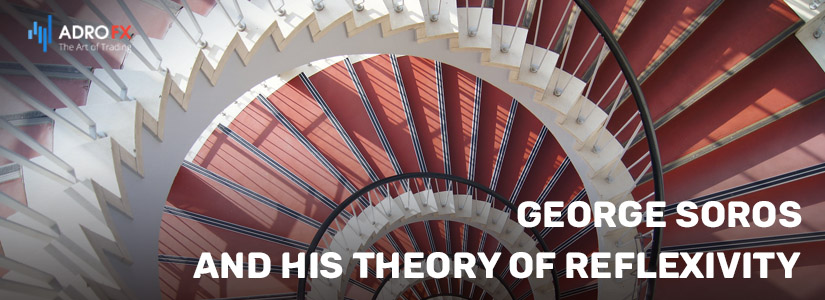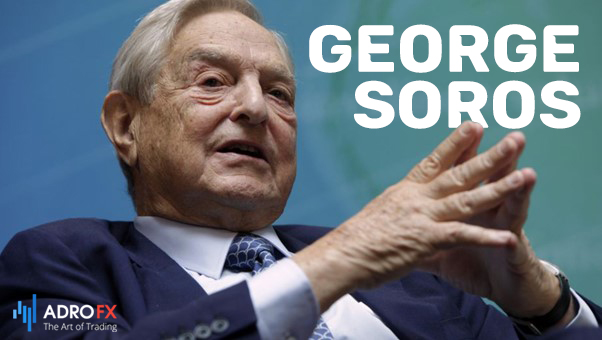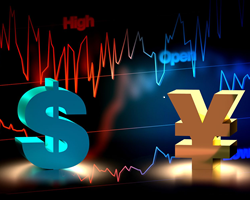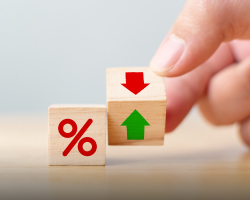George Soros and His Theory of Reflexivity

Traders and investors use various methods of fundamental and technical analysis, which mostly belong to the branches of economic and mathematical sciences.
However, there is another less popular approach in describing stock price movements - stock market reflexivity theory.
The theory became famous when investor George Soros managed, using a trading system based on it, to make an absolutely record profit of a billion dollars in one day. The doctrine has sociological principles and that is why it is difficult to refer to any existing classification of market analysis methods.
The number of traders using the methods of reflexivity is still small, however, most of them are successful.
Let us consider in more detail the theory of reflexivity, its definition, essence, and basic principles.
What is Soros' Theory of Reflexivity
The founders of the sociological theory of reflexivity are W. I. Thomas and R. Merton. Further study and development of the theory were carried out by the sociologist K. Popper. Its brief characteristic was described by two American sociologists W. Thomas and D. Thomas in Thomas's theorem of the same name.
The theory of reflexivity is defined as follows - human behavior is determined not by reality, but by subjective perceptions of it. It is a kind of "self-fulfilling prophecy" when subjects treat a situation as real, then this situation becomes real in its consequences.
An example of this is when the depositors of a financially stable bank had fears about the safety of their funds and believing in the danger, they began to withdraw their funds in droves.
The consequence of such fears was the bankruptcy of the bank, although, in the normal course of events, the work of the organization was not threatened.

The famous investor George Soros received his education at the London School of Economics. However, despite his economic specialization, his mentor was one of the most famous philosophers and sociologists Karl Popper. He introduced the young Soros to the sociological theory of reflexivity, on the basis of which the future billionaire developed his own conception of the reflexivity of the capital markets.
Today this concept is commonly referred to as the theory of reflexivity of fund markets. Its basic definitions and principles were set forth by George Soros in his books "The Crisis of Capitalism" and "The Alchemy of Finance".
In order to form a clearer idea of the theory let us analyze its basic notions.
The notion of reflexivity is rather ambiguous and contradictory. Let us examine it in the context of the concept of Soros.
As the famous investor himself says: "Price movements in financial markets attempt to predict the future, which depends on the decisions made by entities. Instead of a simple reflection of reality, financial markets themselves actively shape reality, which finds its reflection in them. There is a two-way connection between decisions and future events. This connection is called reflexivity".
It should be noted that this theory is of great importance as opposed to all the principles of natural scientific cognition. Since Newton's time, it has been believed that a judgment subject to verification has two outcomes. It can be true or false. For example, "the earth moves around the sun" is true, and "the sun moves around the earth" is false.
This approach is justified when the object of study is not susceptible to information influence-the sun will not move around the moon, even if all the inhabitants of the earth have concerns about it. This is why the theory of equilibrium, which comes to economic science from physics, cannot be effective.
In economics, more precisely in financial markets (the market is the relationship of people), there is always a feedback mechanism. Subjects react to forces surrounding them, perceive and analyze them, and express their attitude to them, which is also a force transforming forces influencing them.
It is this two-sided reflexive communication between the expected and the occurring that is the main key to understanding all phenomena in society, politics, and economics.
Thus the theory of reflexivity of capital markets is a set of methods and techniques that study the influence of representations of subjects of market relations on the price movement of capital markets and the reflexive influence of market prices on the formation of these subjects' representations.
In simple words, the theory of reflexivity by George Soros can be described as a theory that studies the mutual dependence of traders' (investors') expectations on the market and of the market itself on the traders (their expectations).
The Essence and Principles of the Reflexivity Theory on the Stock Market
George Soros believes that the analysis based on the theory of reflexivity is more effective nowadays for studying price movements on fund markets and other social and economic laws than the naturally accepted scientific methods of cognition in fundamental economics.
Today, the world is characterized by a bias against truly human values, an unhealthy substitution of them for monetary values. The capitalist system of the world is an incomplete, distorted form of an open society.
According to the theory, subjects enter into market relations without knowledge, but with preconceived notions. If reflexive processes succeed in correcting preconceived notions, price movements begin to tend toward an equilibrium state, but if the manifestation of bias is reinforced by feedback, price movements may deviate from the equilibrium state for quite a long period, without any tendency to return to the initial state.
As George Soros claims, over the past century, financial markets have been in a constant state of either a rapid decline in business activity or a significant increase in it, with no predominant trend in equilibrium states. That is why it is very strange the position of fundamentalist economists - who hold the equilibrium concept.
Financial markets have a tendency to go out of equilibrium states, a state of decline or rise is their basis.
An example of successful use of the theory of reflexivity is Soros' investment in the U.S. military-industrial complex. In the mid-1980s, to support Israel in the military conflict with Egypt, the USSR sent its ally heavy weapons, which turned out to be substantially superior to U.S. counterparts.
The response of the U.S. authorities was to increase funding for the U.S. defense industry, there was excitement, and military government orders began to come in. The fears of the American authorities raised the value of the earlier relatively cheap shares. In the first year alone, Soros received $300 million in profits from the purchase of the shares.

But the most famous is September 16, 1992, or as that day was called in England, "Black Wednesday". George Soros managed to make $1 billion in the confrontation between the central banks of Germany and England. The central bank of England decided to lower its interest rate amidst an unstable situation in Europe. Soros found out about it a day before and decided to open a position against the pound sterling. The exchange rate of the pound suffered one of the most devastating falls; Soros closed the position with unprecedented profit.
Conclusion
The theory of reflexivity is currently not widely accepted in scientific circles. This is probably why the concept - Soros' theory of reflexivity - has not received much attention or been studied widely among traders.
However, the success of one of the most famous investors of the XX century makes traders pay attention to this theory more and more often.
In the conditions of a constantly changing market, when many methods and ways of analysis are losing their relevance, the theory of reflexivity may well become the future basis for the trading systems of successful traders.
About AdroFx
Established in 2018, AdroFx is known for its high technology and its ability to deliver high-quality brokerage services in more than 200 countries around the world. AdroFx makes every effort to keep its customers satisfied and to meet all the trading needs of any trader. With the five types of trading accounts, we have all it takes to fit any traders` needs and styles. The company provides access to 115+ trading instruments, including currencies, metals, stocks, and cryptocurrencies, which make it possible to make the most out of trading on the financial markets. Considering all the above, AdroFx is the perfect variant for anyone who doesn't settle for less than the best.










